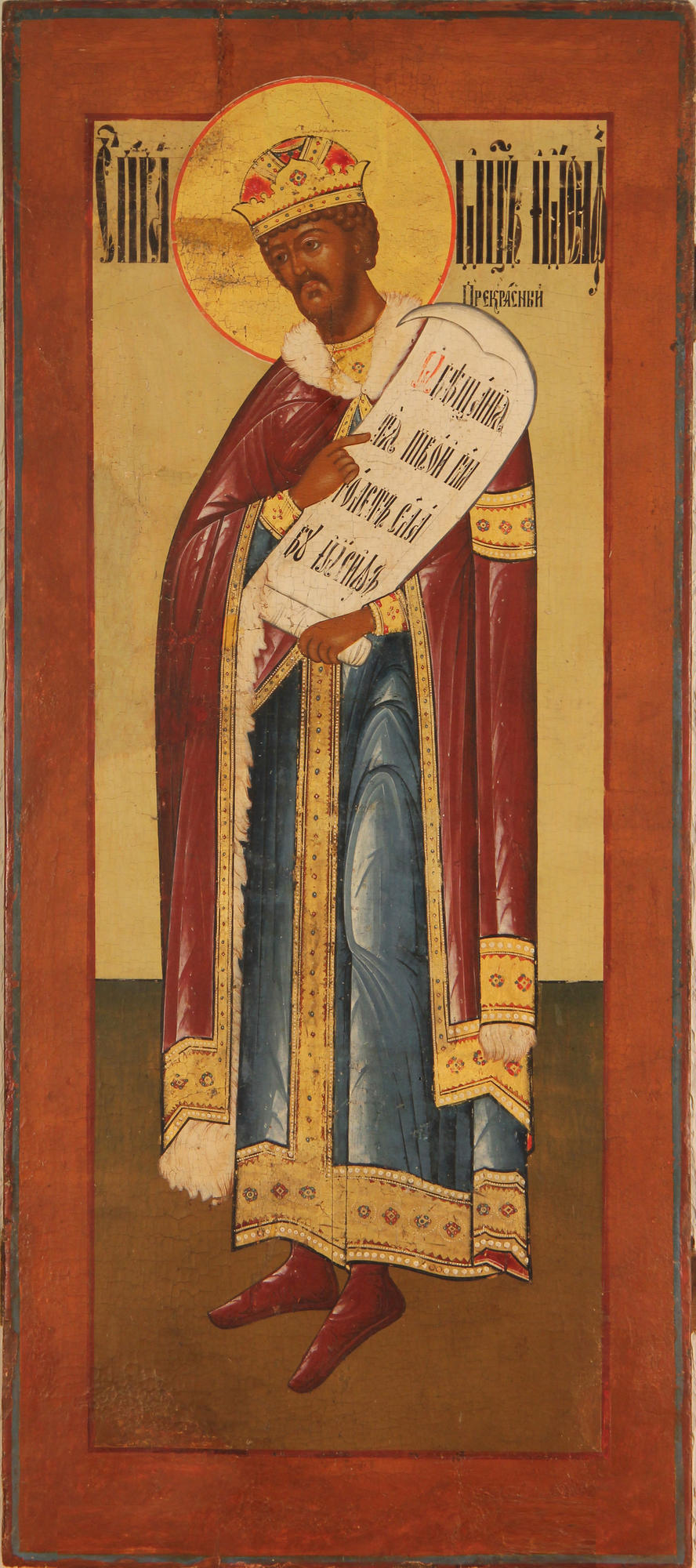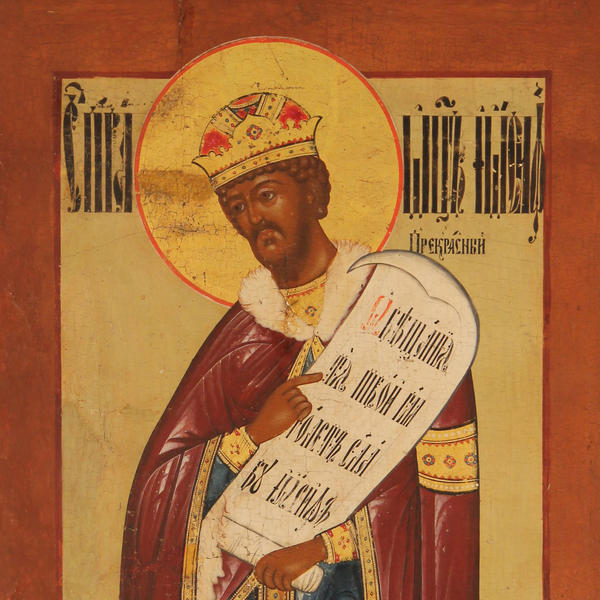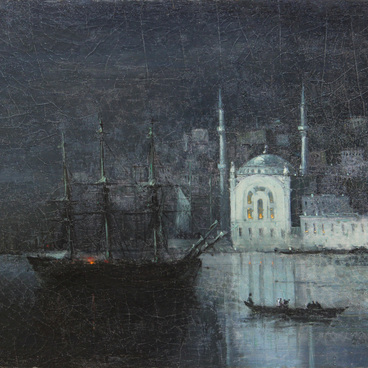On an icon from the collection of Khanty-Mansiysk State Museum of Fine Arts, an unknown artist of the 19th century depicted Joseph the Fair, one of the 12 sons of the Old Testament Patriarch Jacob, who died about 1700 BC.
The master painted the holy righteous Joseph the Fair in full height, dressed in a blue gold-edged dalmatic, thick woolen tunic with sleeves reaching to the wrists. On top of the dalmatic, the saint wears a long dark-red cloak with white fur lining, adorned with precious stones and pearls. On his head, the iconographer painted a golden crown. The gold halo around Joseph’s head has a thin red and white outline. The saint holds a spread scroll in his hands.
According to the legend, Joseph’s siblings envied the righteous Joseph and were afraid of him, because his told them his dreams, forecasting his future greatness. Once they decided to kill Joseph, but changed their minds. The eldest of them, Reuben, suggested to undress Joseph and throw him into a moat, and the other brother, Judah, wanted to sell him to merchants who were heading to Egypt with a caravan. In Egypt, Joseph was bought by Potiphar, head of the Pharaoh’s bodyguards.
Joseph was very good-looking, for which he was called Joseph the Fair. He was a virtuous and chaste man. When Potiphar’s wife tried to seduce Joseph, the young man rejected her. She got angry and wrongfully accused the righteous Joseph in front of her husband, saying that the young man wanted to defile her. Potiphar believed the woman and threw Joseph into prison.
In the dungeon, Joseph the Fair continued to interpret dreams. Two years later, he unraveled the dreams of the Egyptian pharaoh, foretelling forthcoming hungry years and misery for the country. In gratitude, the Pharaoh freed Joseph and made him first dignitary of Egypt.
When famine hit Palestine, homeland of righteous Joseph, the saint did not take revenge on his brothers and helped his father move to Egypt with all his clan. Before his death, the righteous Joseph made a bequest to transfer his bones from Egypt to the Promised Land. This was done during the lifetime of Holy Prophet Moses, 1496 years BC.
Through his sons Manasseh and Ephraim, Saint Joseph the Fair laid the foundation for two tribes of Israel. The legend of Joseph is one of the most popular stories in the Old Testament. In Orthodox icon painting, icons with Joseph the Fair were rare; they were mainly destined for the forefather row of the iconostasis. In secular art, however, the story of Joseph is shown on multitude of paintings. Scenes from his life were painted by Alexander Ivanov, Alexei Novoskoltsev and other Russian artists.
The master painted the holy righteous Joseph the Fair in full height, dressed in a blue gold-edged dalmatic, thick woolen tunic with sleeves reaching to the wrists. On top of the dalmatic, the saint wears a long dark-red cloak with white fur lining, adorned with precious stones and pearls. On his head, the iconographer painted a golden crown. The gold halo around Joseph’s head has a thin red and white outline. The saint holds a spread scroll in his hands.
According to the legend, Joseph’s siblings envied the righteous Joseph and were afraid of him, because his told them his dreams, forecasting his future greatness. Once they decided to kill Joseph, but changed their minds. The eldest of them, Reuben, suggested to undress Joseph and throw him into a moat, and the other brother, Judah, wanted to sell him to merchants who were heading to Egypt with a caravan. In Egypt, Joseph was bought by Potiphar, head of the Pharaoh’s bodyguards.
Joseph was very good-looking, for which he was called Joseph the Fair. He was a virtuous and chaste man. When Potiphar’s wife tried to seduce Joseph, the young man rejected her. She got angry and wrongfully accused the righteous Joseph in front of her husband, saying that the young man wanted to defile her. Potiphar believed the woman and threw Joseph into prison.
In the dungeon, Joseph the Fair continued to interpret dreams. Two years later, he unraveled the dreams of the Egyptian pharaoh, foretelling forthcoming hungry years and misery for the country. In gratitude, the Pharaoh freed Joseph and made him first dignitary of Egypt.
When famine hit Palestine, homeland of righteous Joseph, the saint did not take revenge on his brothers and helped his father move to Egypt with all his clan. Before his death, the righteous Joseph made a bequest to transfer his bones from Egypt to the Promised Land. This was done during the lifetime of Holy Prophet Moses, 1496 years BC.
Through his sons Manasseh and Ephraim, Saint Joseph the Fair laid the foundation for two tribes of Israel. The legend of Joseph is one of the most popular stories in the Old Testament. In Orthodox icon painting, icons with Joseph the Fair were rare; they were mainly destined for the forefather row of the iconostasis. In secular art, however, the story of Joseph is shown on multitude of paintings. Scenes from his life were painted by Alexander Ivanov, Alexei Novoskoltsev and other Russian artists.



